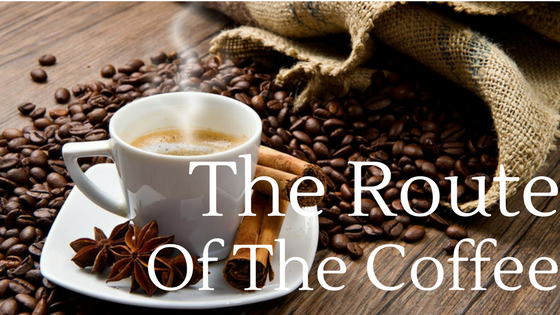THE ROUTE OF THE COFFEE.
We want to invite you to that you explore the world of the coffee. This blog has a brief introduction to the history of the coffee and a map of the geographical location and of his world production, besides how it is transported and as the logistics is in use on having transported the coffee for the world. You will know part of the process, to turn the curious seed into a drink of exquisite aroma.
HISTORY
The history of the coffee begins in Ethiopia, of there it happened to Arabia and later to the India. Though the big propagators of the coffee were the Duchess, who imported the coffee to his lands and were expanding it to Brazil, Central America and to other many countries. Thanks to it, a today it has turned into a universal drink.
Variety of coffee in the world
It is there where, when it has matured his cherry, it is gathered and is prepared by methods that come marked by the own resources of every zone coffee grower. On having finished the phase of production, it is ready to sell and to remain in hands of an exporter in order that it initiates the logistic operation and of distribution.
2.He is precisely this local exporter the one that signs " European Contract of the Coffee ", with a trader or intermediary company that sells the coffee to the toasters, which function is to guard over the success of the operation and to supervise his details. This commitment contemplates aspects as " the quantity and quality of coffee, the number of faults and his characteristics and the tests that will have to be done before delivering it ".
3.One of the key points of the process, is the logistics that includes the transport of the coffee by ship by means of containers of approximately 20 tons, which in many cases take the Port of Barcelona as a destination, some of the more important hubs of distribution of green coffee of the Mediterranean. Once in destination, a logistic operator takes charge unloading and storing the goods and does the pertinent checkings relative to his weight and quality.

4.From there, if the tests turn out to be positive, this coffee submits to his buyer. And it is that the sale of the coffee, it has a great advantage, and is, neither that is a product that does not need an excessive care, nor refreshed containers. It yes, he must be kept removed from any area of dampness that could alter it and of products that his smell could modify.

5.If it is true, that not always the coffee is going to stop to hands of a final client. Sometimes this one ends up by being bought by specialized operators of coffee. In this site buyers and sellers of coffee, transactional and they fix the price. This price takes as a base in the purchase and sale of the coffee globally.
6.The coffee is a business on a worldwide scale and of big proportions, which it needs of a great logistic level. Nowadays the Port of Barcelona, it is the principal port of receipt and manipulation of coffee of the Mediterranean. And it is a great advantage for the sector in general, and for the toasters especially, since if they had to go to other countries the costs would be higher.
Year after year, there is an important growth of the purchase of coffee and it helps to that there is coffee in all the homes of the world.
And with this brief explanation we can say that:
Logistics management has become a vital part of the coffee trade.
The logistic structure is in charge of the control of the coffee from its load in the countries of origin until delivery to the customer, regardless of the quantity and always attending to the specific needs of each customer.
In the logistics operation, a control of the coffee from the country of origin to the delivery to the customer is offered. A team that combines experience and dedication, always attentive to new developments and in constant formation, makes possible a comprehensive control in each phase.
Within this process, the monitoring of coffee and an adequate traceability management ensure compliance even under the most demanding conditions.
Quality is especially relevant in today's coffee trade and it is necessary to emphasize controls at all times to ensure that coffee is not altered and quality is preserved intact.
We finish with this infographic, our last TIM blog (Oscar class) talking about the coffee route, and showing how the logistics operation in the coffee process.
 |
| ÓSCAR BOLUDA. |
Jenny Reyes & Sergio Gutiérrez.











MUY BUEN BLOG !!
ResponderEliminarThank you for your post. This is excellent information. It is amazing and wonderful to visit your site.
ResponderEliminarGleason's New Standard Map Of The World